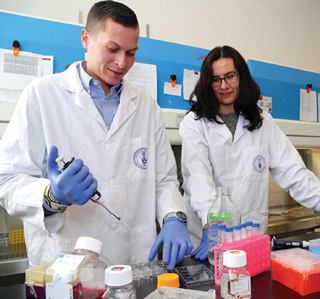
A new hydrogel created by engineering researchers at the University of Toronto prompts skin cells to crawl toward one another, healing chronic wounds.
A team led by Professor Milica Radisic, Ph.D., tested the peptide-hydrogel biomaterial on healthy human skin cells, called keratinocytes, and on keratinocytes derived from elderly diabetic patients.
They reported non-healing wounds closed 200% faster than without treatment, and 60% faster than using treatment with a leading collagen-based product.
“We were happy when we saw the cells crawl together much faster with our biomaterial, but if it didn’t work with diabetic cells, that would have been the end of the story,” Radisic said. “But even the diabetic cells traveled much faster. That’s huge.”
Radisic and her team have been studying their peptide’s effect on cell survival for nearly 10 years. But this is the first time they’ve applied QHREDGS, or Q-peptide for short, to wound healing.
In work published in the Proceedings of the National Academy of Sciences, they reported a single dose of the biomaterial closed wounds in less than two weeks.
“One of the biggest challenges with the work was convincing our peers that the results we were getting were indeed true, as they were staggering, even to us,” said Lewis Reis, a doctoral student working on the project who has since graduated.
From the February 01, 2017 Issue of McKnight's Long-Term Care News



